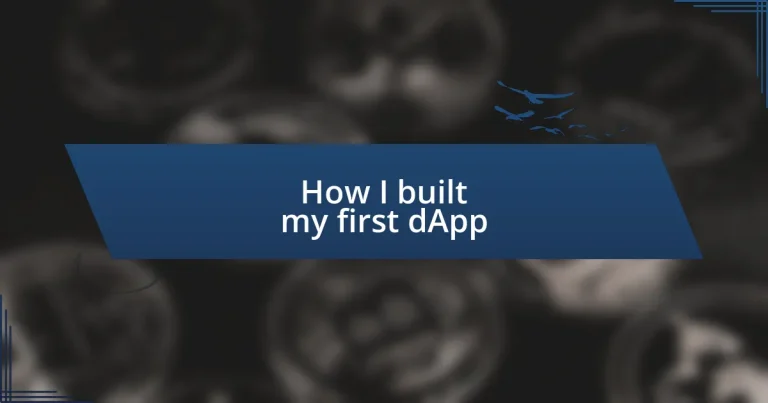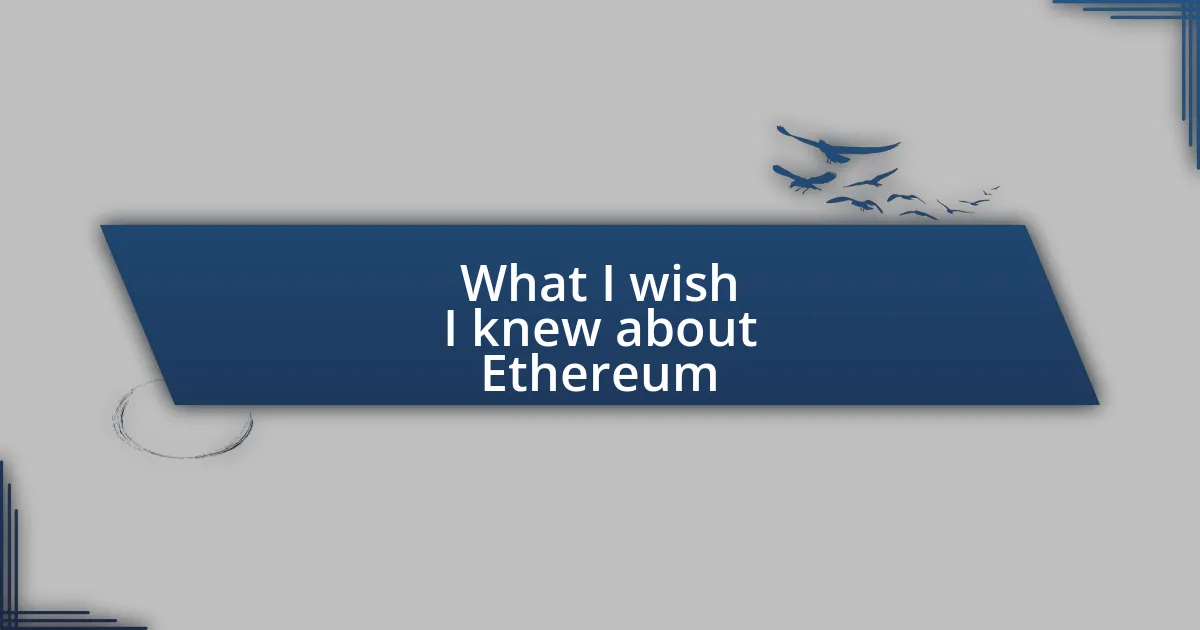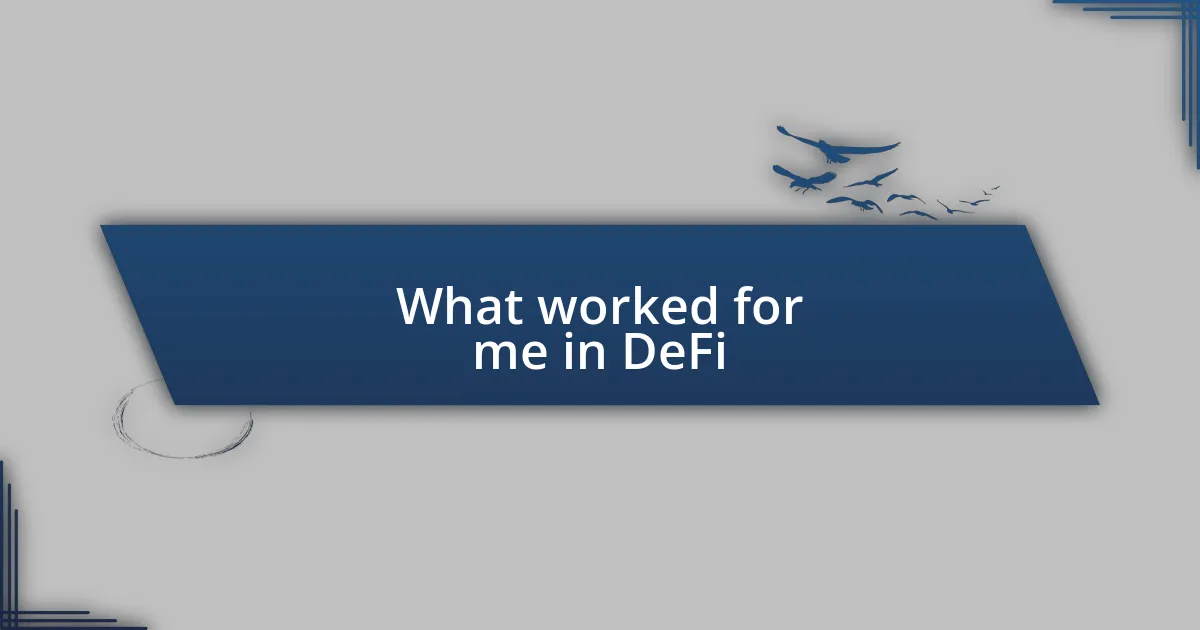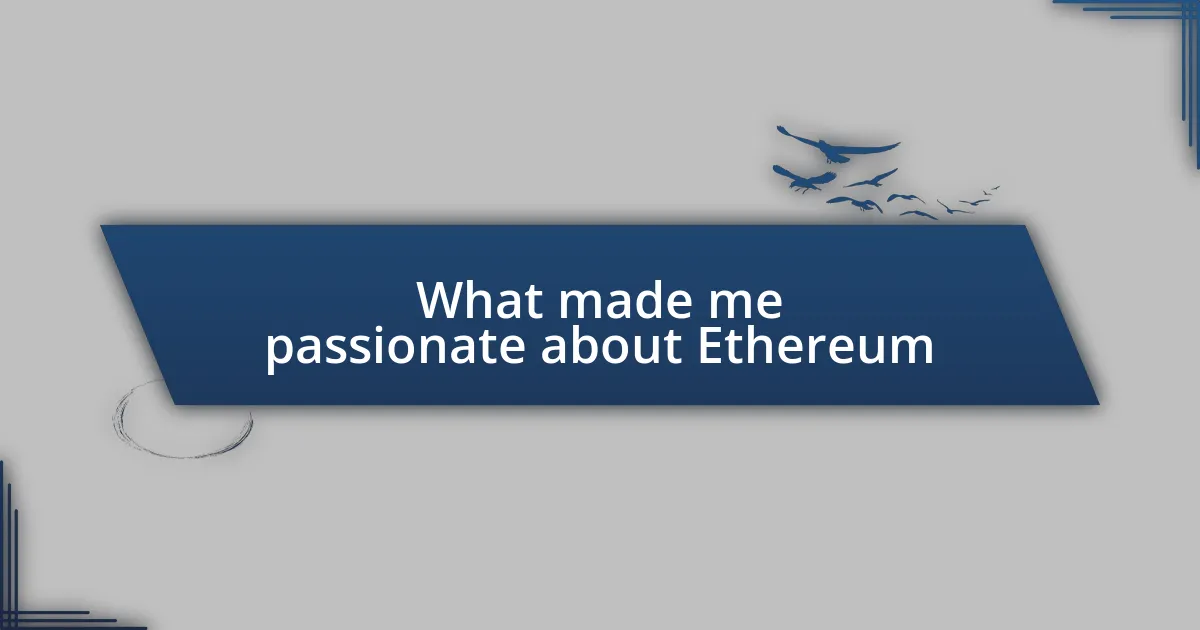Key takeaways:
- dApps operate on a blockchain, promoting transparency and security without central authority.
- Choosing the right blockchain is crucial; factors like scalability and community support can impact usability.
- Setting up a development environment requires essential tools like a code editor, Node.js, and a blockchain SDK for effective smart contract development.
- Post-deployment monitoring and community engagement are essential for improving user experience and ensuring the dApp’s success.
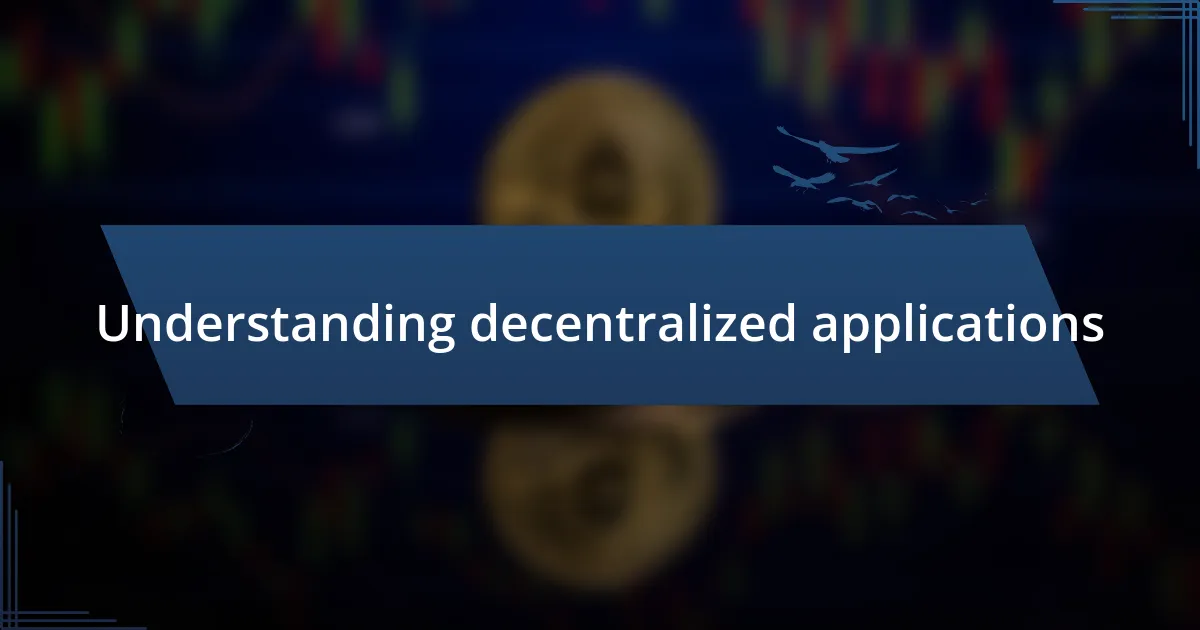
Understanding decentralized applications
Decentralized applications, or dApps, are a fascinating blend of technology and innovation. Unlike traditional applications, they operate on a blockchain network, which means no single entity has control over them. I remember the first time I realized the power of dApps; I was amazed that these applications could run without a central authority, creating opportunities for transparency and security.
When I built my first dApp, the concept was both thrilling and daunting. The idea that I could create something that was immune to censorship and manipulation really motivated me. Have you ever wondered what it would be like to build something that operates independently? It’s like having the keys to a digital kingdom where users can truly own their data.
One of the key features of dApps is their ability to facilitate peer-to-peer interactions without intermediaries. This concept struck a chord with me when I was exploring different use cases, especially in finance and social networking. It made me think about how much more equitable our digital interactions could be if we leveraged this technology. The shift toward decentralization is not just technical; it carries the potential for social change as well.
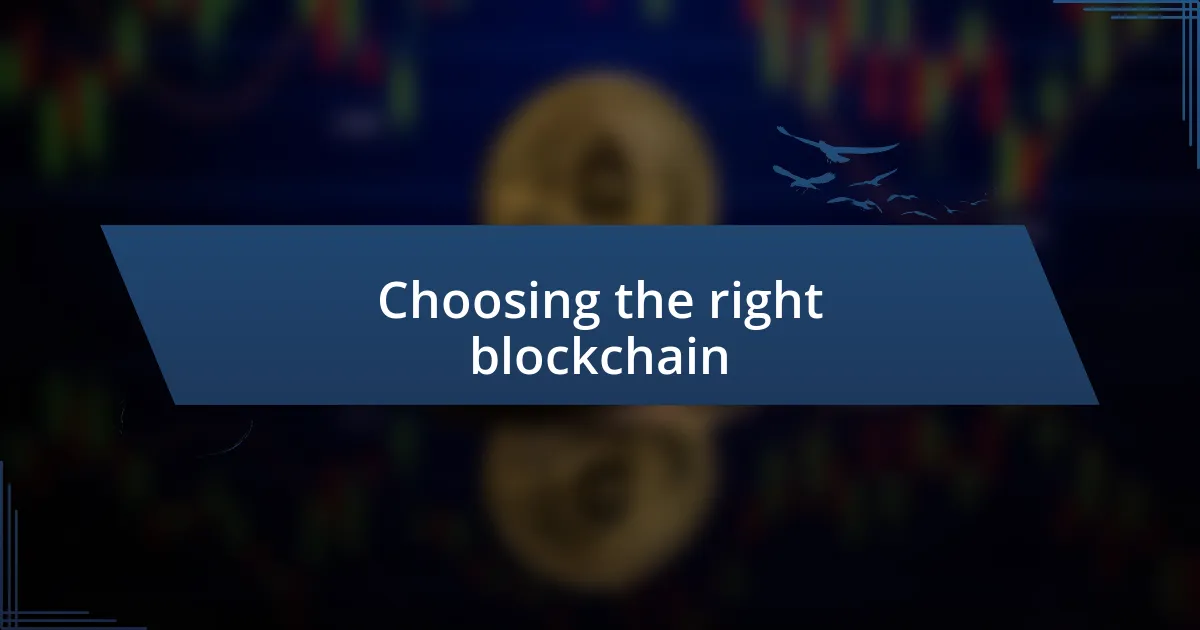
Choosing the right blockchain
Choosing the right blockchain for your dApp can make all the difference in its success and usability. I remember feeling overwhelmed by the number of options available when I first started. Each blockchain has its unique features, strengths, and drawbacks. For instance, Ethereum is renowned for its extensive developer community and robust smart contract capabilities, while Binance Smart Chain offers faster transactions at a lower cost. Selecting the right one depends on the specific needs of your application.
In my experience, I found it essential to weigh factors like scalability, transaction speed, and community support. When I chose a blockchain for my dApp, I focused on how many users it could handle simultaneously and how quickly transactions could be processed. The last thing I wanted was for users to have to wait or face delays. It became clear to me that researching and assessing these elements in the early stages would save me headaches later on.
Comparing blockchain options can be quite illuminating and helpful in guiding your decision-making. I often created a simple comparison chart that helped clarify my thoughts. After all, when you’re choosing the foundation for your project, a systematic approach can shed light on which blockchain will serve your vision best.
| Blockchain | Strengths |
|---|---|
| Ethereum | Extensive developer community, mature smart contract functionality |
| Binance Smart Chain | Lower transaction costs, faster block times |
| Cardano | Strong focus on security, scalability through layered architecture |
| Solana | High throughput, low latency |
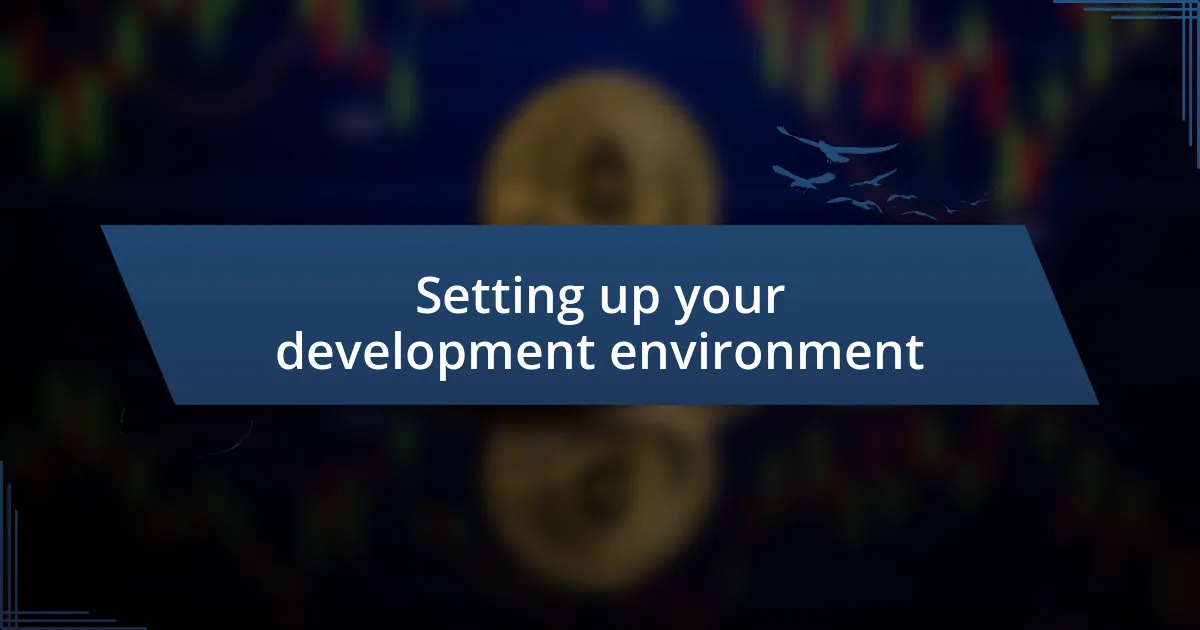
Setting up your development environment
Setting up your development environment is the next crucial step after choosing the right blockchain. I vividly remember the excitement of downloading the necessary tools, but it quickly turned into frustration as I dealt with installation issues. It felt like a rite of passage; the moment I had everything properly configured, I felt a sense of accomplishment. Here’s a simple list of what you’ll typically need to get started:
- Code editor: Choose one that suits your style – I personally love Visual Studio Code for its extension support.
- Node.js: Essential for managing packages and running local servers. Install the latest version for compatibility.
- Blockchain SDK: Depending on your blockchain choice, select an SDK. For Ethereum, I found Web3.js to be particularly user-friendly.
- Truffle or Hardhat: These tools streamline smart contract development, testing, and deployment. I recommend getting familiar with both to find your preference.
- Metamask wallet: A must-have for interacting with the blockchain; it makes testing much easier.
Once I had everything installed, the initial trials of writing my first smart contract were nerve-wracking yet thrilling. It was those moments of breakthrough—like successfully deploying my first contract—that kept me motivated. The setup process can feel daunting, but remember, the satisfaction of a working environment is worth the effort.
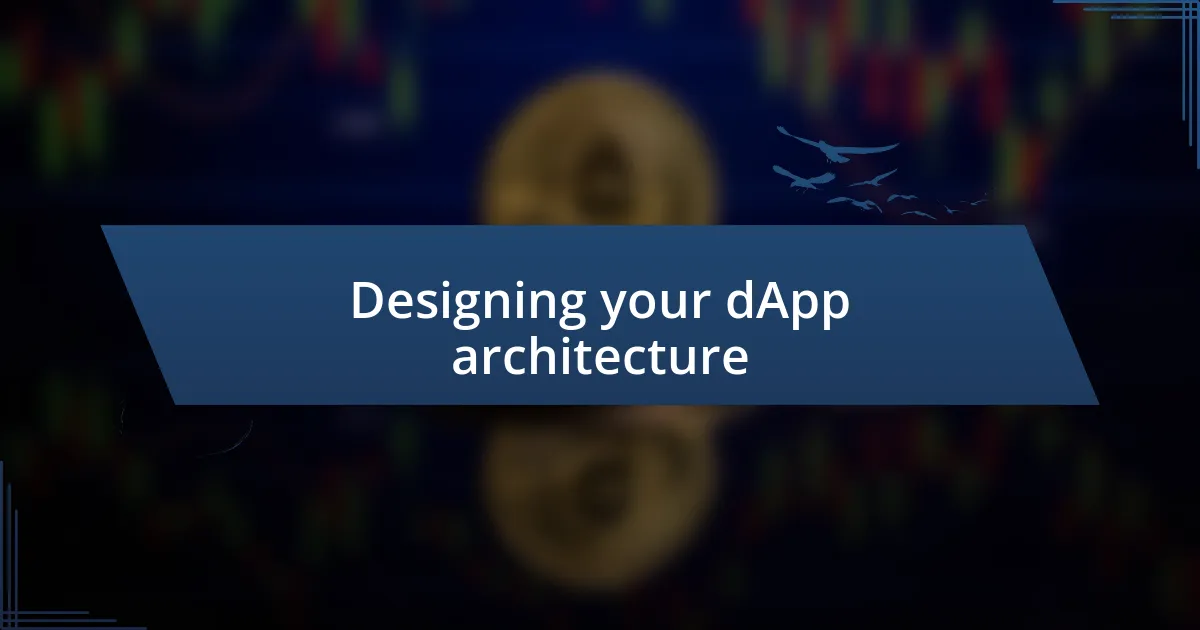
Designing your dApp architecture
Designing the architecture of your dApp is akin to laying the foundation of a house; it dictates how sturdy and functional your application will be. When I started, I discovered that a modular approach worked best for me, allowing different components to interact without a tight coupling. This flexibility made it easier to iterate on features while maintaining overall system stability—something I found invaluable during the development process.
One of the critical considerations is selecting the right architecture pattern. I often leaned towards the client-server model, where the front end communicates with smart contracts on the blockchain via a middleware layer. This setup not only keeps the user experience smooth but also allows for easier updates on the client side without needing to modify the blockchain itself. Have you thought about how the architecture impacts user interactions? The architecture can significantly shape overall performance, so it’s worth deliberating.
While diving into the scalability of my dApp, I remember grappling with the balance between decentralization and performance. I opted for a combination of on-chain and off-chain solutions that created a responsive yet decentralized system. For example, I used IPFS to store large files, ensuring that the essential asset integrity remained intact while keeping the blockchain free of unnecessary bloat. Analyzing your needs and potential user base early can guide your architectural choices and define the evolution of your dApp.
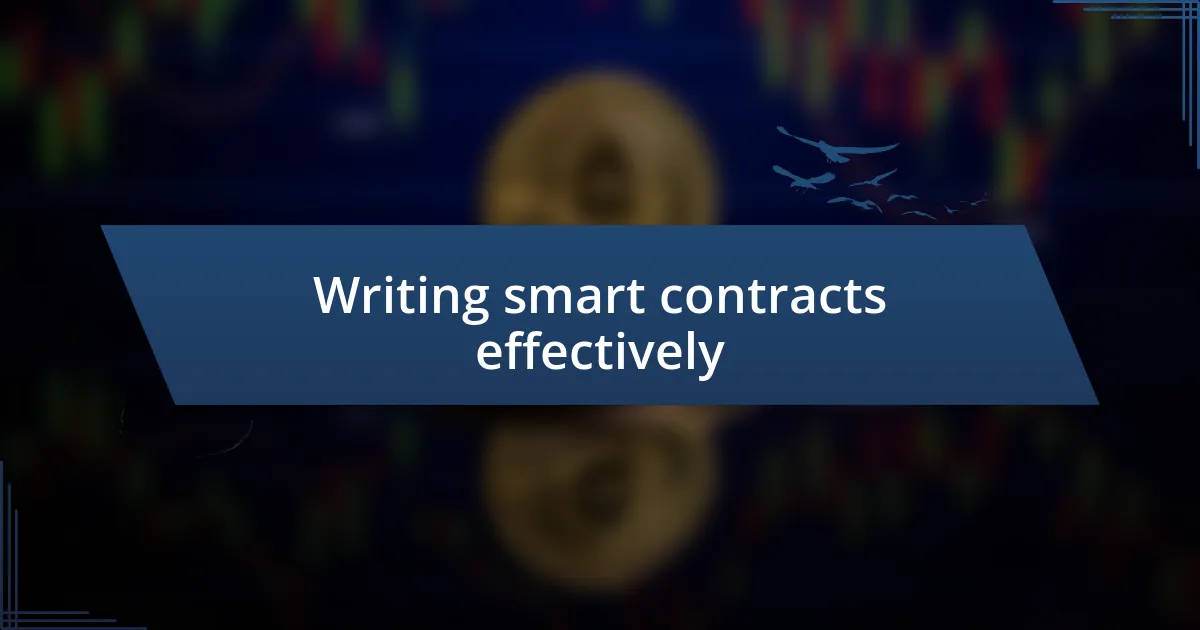
Writing smart contracts effectively
Writing smart contracts effectively requires a deep understanding of both the technical and logical aspects of the code. When I was drafting my first smart contract, I remember spending countless hours meticulously checking each function to ensure it was both efficient and secure. It’s essential to write clear and concise code so that future developers can easily understand and modify it. Have you considered how readability can impact collaboration?
A common pitfall I encountered was overlooking the importance of testing. Initially, I rushed my smart contracts into deployment, only to discover bugs that could have been addressed early through thorough unit testing. I learned to embrace platforms like Remix and Truffle that allow for extensive testing in a simulated environment, which ultimately saved me from costly mistakes and gave me peace of mind.
I also found that being cautious with gas consumption was crucial. In my experience, optimizing for gas not only reduced transaction costs for users but also improved the overall responsiveness of my dApp. By analyzing and refining my transactions, I realized that small adjustments could lead to significant improvements in user experience. Are you paying attention to how gas fees might affect your users’ engagement?
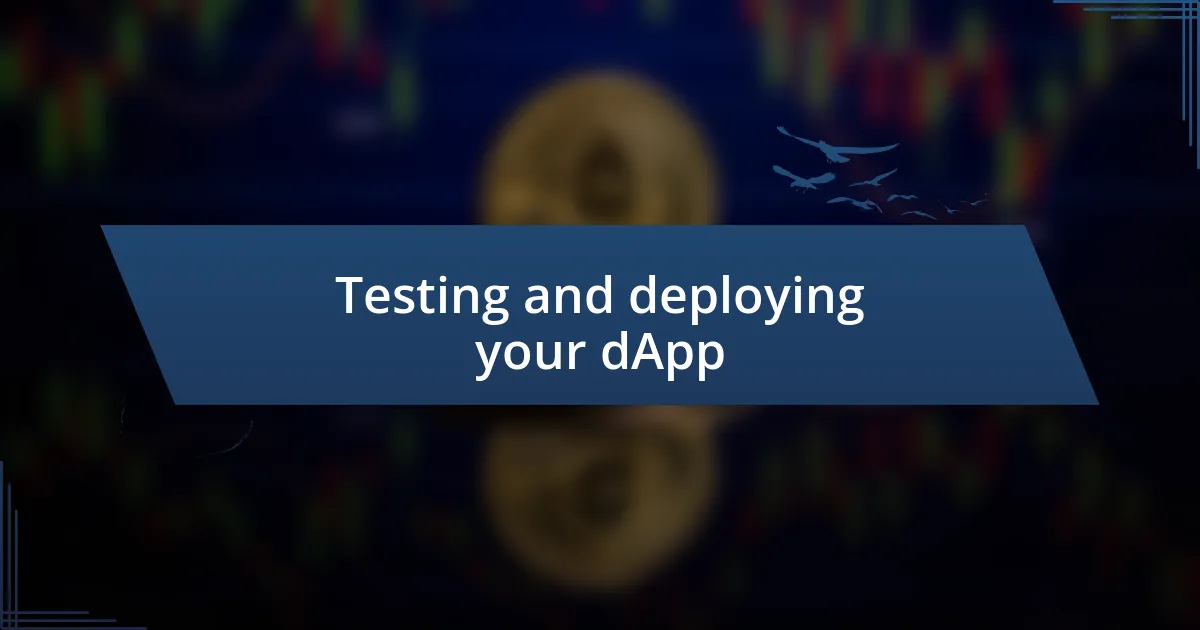
Testing and deploying your dApp
When I moved on to testing my dApp, I vividly recall the sense of anxiety that came with it. Each time I ran a test and watched for errors, it felt like a nail-biting suspense. Using tools like Ganache allowed me to mimic real network conditions, giving me confidence in how my dApp would perform under pressure. Have you ever felt that thrill of seeing a test pass after countless tweaks?
Deploying my dApp was another emotional rollercoaster. I remember the moment I hit the “Deploy” button; it was filled with both excitement and trepidation. Would everything work as planned? During deployment, I ensured I had a thoroughly tested setup on a testnet first, which helped mitigate many potential issues. Just imagine the relief when I confirmed that the deployment succeeded and users could finally access my creation.
Post-deployment monitoring was something I initially underestimated. I quickly learned that my work didn’t end once the dApp was live; I needed to keep an eye on user feedback and network performance. Engaging with users and addressing their concerns made me appreciate the community aspect of blockchain. Have you considered how ongoing support can shape the future of your dApp?
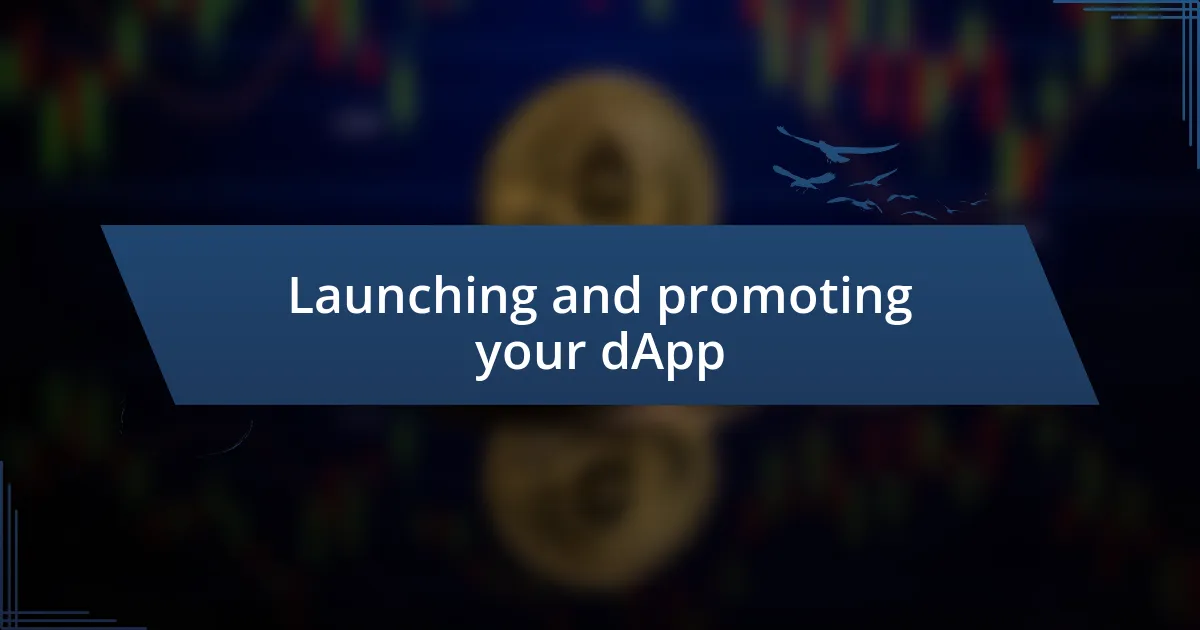
Launching and promoting your dApp
When it came time to launch my dApp, I felt a mix of exhilaration and vulnerability. Sharing something I had poured my heart and soul into was nerve-wracking, but I knew that a solid promotion strategy was crucial. Utilizing social media platforms, I crafted an engaging narrative around my dApp, sharing not just its features but the journey that led to its creation. Have you ever wondered how an authentic story can connect users to your project on a personal level?
Once the launch was live, I turned to community-building as a primary focus. I remember joining forums and Discord channels to talk directly with potential users, taking their questions and suggestions to heart. Participating in hackathons and demo days offered me a chance to showcase my dApp while connecting with like-minded developers and enthusiasts. Have you tapped into the power of community in promoting your project?
Additionally, I learned the importance of gathering feedback as part of my ongoing marketing strategy. With each interaction, I discovered how critical user input was for refining my dApp further. I vividly recall implementing changes based on community suggestions, which not only improved functionality but also boosted user satisfaction. By engaging with your audience in this way, how can you transform their experiences into better iterations of your dApp?

